Rudolph valentino
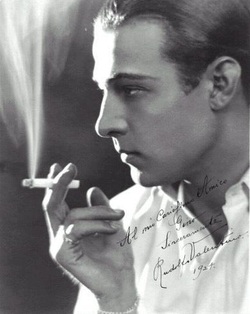
Bryanna Chrisp-
Rudolph Valentino was Hollywood's handsome, popular, exotic, Italian sheik of the 1920's. Women adored him for his visible sex appeal as well as his romantic movie roles. Men loathed him for what The Chicago Tribune identified as being "Pink Powder Puff". He was well known for his leading roles in the silent films " The Sheik" which premiered in 1921, and "Blood and Sand", which premiered in 1922. In 1926, after his sudden death caused by a stomach ulcer, mass hysteria ensued; several female fanatics took their own lives in their grief. The emotional power one man held over women he had never even became acquainted with was previously unheard of.
(http://www.goldensilents.com/stars/rudolphvalentino.html)
(http://www.fullissue.com/index.php/rudolph-valentino-biography-1895-1926.html)
Rudolph Valentino was Hollywood's handsome, popular, exotic, Italian sheik of the 1920's. Women adored him for his visible sex appeal as well as his romantic movie roles. Men loathed him for what The Chicago Tribune identified as being "Pink Powder Puff". He was well known for his leading roles in the silent films " The Sheik" which premiered in 1921, and "Blood and Sand", which premiered in 1922. In 1926, after his sudden death caused by a stomach ulcer, mass hysteria ensued; several female fanatics took their own lives in their grief. The emotional power one man held over women he had never even became acquainted with was previously unheard of.
(http://www.goldensilents.com/stars/rudolphvalentino.html)
(http://www.fullissue.com/index.php/rudolph-valentino-biography-1895-1926.html)
Ernest Hemingway
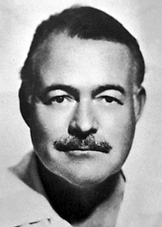
Bryanna Chrisp-
Ernest Hemingway was born less one year prior to the start of the twentieth century. At the youthful age of seventeen, he gained valuable experience as a writer for a local newspaper in his hometown of Kansas City. This experience was crucial to the development of his set of writing abilities for future use. He had worked as a volunteer in Italian units during WWI. His war experiences were utilized in his composition of two fictional works, The Sun Also Rises, and Farewell to Arms, both popular novels of the 1920's.
(http://nobelprize.org/nobel_prizes/literature/laureates/1954/hemingway-bio.html)
Ernest Hemingway was born less one year prior to the start of the twentieth century. At the youthful age of seventeen, he gained valuable experience as a writer for a local newspaper in his hometown of Kansas City. This experience was crucial to the development of his set of writing abilities for future use. He had worked as a volunteer in Italian units during WWI. His war experiences were utilized in his composition of two fictional works, The Sun Also Rises, and Farewell to Arms, both popular novels of the 1920's.
(http://nobelprize.org/nobel_prizes/literature/laureates/1954/hemingway-bio.html)
Lemon Jefferson
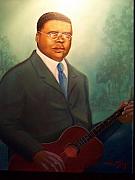
Bryanna Chrisp-
Lemon Jefferson was born blind (some argue partially blind) in September of 1893, and thus, as an adult musician, Blind Lemon Jefferson had become his stage name. His musical career was spawned when he decided as a young adult that his handicap would forever prevent him from becoming effective in his work at the time, a farmhand. In 1926, his voice was recorded for Paramount Records. In the duration of the four years beginning in 1926 and ending in 1929, he recorded nearly 100 songs. His music motivated aspiring blues singers throughout the United States, even after his dead body was found in Chicago in December of 1929. (http://www.oldies.com/artist-biography/Blind-Lemon-Jefferson.html)
Lemon Jefferson was born blind (some argue partially blind) in September of 1893, and thus, as an adult musician, Blind Lemon Jefferson had become his stage name. His musical career was spawned when he decided as a young adult that his handicap would forever prevent him from becoming effective in his work at the time, a farmhand. In 1926, his voice was recorded for Paramount Records. In the duration of the four years beginning in 1926 and ending in 1929, he recorded nearly 100 songs. His music motivated aspiring blues singers throughout the United States, even after his dead body was found in Chicago in December of 1929. (http://www.oldies.com/artist-biography/Blind-Lemon-Jefferson.html)
William S. Hart
Roman. (0) )
Up untill the 1920s Hart was a performer on Broadway and an actor. Hart in his earlier days was seen as the perfect westerner. He was portrayed as an old west hero or villain who usually stole the hearts of audiences in the U.S. But, during the 20's he became an old flame; and the ideals of going west seemed old and out played. Then in 1925 he released a movie entitled Tumbleweeds, the last great western film of the silent era. He was the face of western movies, even when they were being put to rest.
http://movies.nytimes.com/person/93608/William-S-Hart/biography
Up untill the 1920s Hart was a performer on Broadway and an actor. Hart in his earlier days was seen as the perfect westerner. He was portrayed as an old west hero or villain who usually stole the hearts of audiences in the U.S. But, during the 20's he became an old flame; and the ideals of going west seemed old and out played. Then in 1925 he released a movie entitled Tumbleweeds, the last great western film of the silent era. He was the face of western movies, even when they were being put to rest.
http://movies.nytimes.com/person/93608/William-S-Hart/biography
Louis Armstrong
Roman. (0) )
Louis Armstrong was the babe of playing jazz. His influence single handedly impacted all of jazz and changed the music forever. He recorded "St. Lewis Blues" with Bessie Smith and created his own band Armstrong's hot five, and hot seven. He played with many orchestras and is most famous for bringing his down south playing of new Orleans to the Chicago public.
http://www.redhotjazz.com/louie.html
Louis Armstrong was the babe of playing jazz. His influence single handedly impacted all of jazz and changed the music forever. He recorded "St. Lewis Blues" with Bessie Smith and created his own band Armstrong's hot five, and hot seven. He played with many orchestras and is most famous for bringing his down south playing of new Orleans to the Chicago public.
http://www.redhotjazz.com/louie.html
Janet Gaynor
Roman. (0) )A five foot, freckled little woman who was America's sweet heart. She was a very popular actress in the silent era; and was the exception to the rule, when she became immensely more popular as the era of talking films began. She is most remembered for her films 7th heaven and Sunrise : a song of two humans; and she received the very first academy award for best actress.
http://projects.latimes.com/hollywood/star-walk/janet-gaynor/
http://www.imdb.com/name/nm0310980/bio
http://projects.latimes.com/hollywood/star-walk/janet-gaynor/
http://www.imdb.com/name/nm0310980/bio
Bessie Smith
Roman. (0) )A black female who originally began playing music to support her orphaned family who became the Empress of the Blues. At the age of nine it had the ability"could shake the change out of pockets" by playing for the townspeople of Chattanooga, Tennessee. She was influenced by Ma Rainey and was most famous for "Crazy Blues" . Due to her success, Colombia records opened up a special division for colored artists.
http://www.library.csi.cuny.edu/dept/history/lavender/386/bsmith.html
http://www.library.csi.cuny.edu/dept/history/lavender/386/bsmith.html
W.E.b. Du bois
Nicolette Tosunian-
William Edward Burghardt DuBois was one of this country's most distinguished educators. Born in a small village in Massachusetts in 1868, DuBois first came face to face with the realities of racism in 19th century America while attending Fisk University in Nashville. In 1895 he was the first African American to earn a Ph.D. from Havard University.In 1897, DuBois took a position with Atlanta University. During his tenure there he conducted extensive studies of the social conditions of blacks in America. At the 1900 Paris World's Fair, DuBois created a full-scale exhibit of African American achievement since the Emancipation Procamation in industrial work, literature, and journalism. It included photodocumentation on educational institutions such as Tuskeegee, Fisk, and Howard. Congress approved of $15,000 for installation, and it was installed - off midway and in the Social Economy section of the Liberal Arts building where it languished compared with the negative Midway exhibits. In 1903 he wrote The Souls of Black Folk which serves as the underpinning of access to many of his ideas.
(http://www.math.buffalo.edu/~sww/0history/hwny-dubois.html)
William Edward Burghardt DuBois was one of this country's most distinguished educators. Born in a small village in Massachusetts in 1868, DuBois first came face to face with the realities of racism in 19th century America while attending Fisk University in Nashville. In 1895 he was the first African American to earn a Ph.D. from Havard University.In 1897, DuBois took a position with Atlanta University. During his tenure there he conducted extensive studies of the social conditions of blacks in America. At the 1900 Paris World's Fair, DuBois created a full-scale exhibit of African American achievement since the Emancipation Procamation in industrial work, literature, and journalism. It included photodocumentation on educational institutions such as Tuskeegee, Fisk, and Howard. Congress approved of $15,000 for installation, and it was installed - off midway and in the Social Economy section of the Liberal Arts building where it languished compared with the negative Midway exhibits. In 1903 he wrote The Souls of Black Folk which serves as the underpinning of access to many of his ideas.
(http://www.math.buffalo.edu/~sww/0history/hwny-dubois.html)
The kid
Nicolette Tosunian-
One of the most important events in 1921 was the rise of Rudolph Valentino as a star. Following his appearance in "The Four Horsemen of the Apocalypse" the public could not get enough of him. He appeared in "The Conquering Power" and then a major role in "The Sheik" which increased his popularity even further. Paramount Pictures made a total of 101 feature–length movies. Charlie Chaplin finished his contract at First National and then joined Douglas Fairbanks and Mary Pickford at United Artists. Germany's F.W. Murnau directs "Nosferatu" based on the story of Dracula. Charlie Chaplin releases his first feature film, “The Kid”.
http://webcache.googleusercontent.com/)
One of the most important events in 1921 was the rise of Rudolph Valentino as a star. Following his appearance in "The Four Horsemen of the Apocalypse" the public could not get enough of him. He appeared in "The Conquering Power" and then a major role in "The Sheik" which increased his popularity even further. Paramount Pictures made a total of 101 feature–length movies. Charlie Chaplin finished his contract at First National and then joined Douglas Fairbanks and Mary Pickford at United Artists. Germany's F.W. Murnau directs "Nosferatu" based on the story of Dracula. Charlie Chaplin releases his first feature film, “The Kid”.
http://webcache.googleusercontent.com/)
Main street (book)
Nicolette Tosunian-
Published in 1920, Sinclair Lewis's Main Street is the story of an ambitious and passionate young woman, Carol Kennicott, who marries a country physician and follows him to live in the town of Gopher Prairie, Minnesota. Lewis drew heavily on his own Minnesotan hometown for the book's material, but as the title implies, Gopher Prairie is also clearly intended as a generic stand-in for all of small-town America at the beginning of the 20th century. Educated, artistic, and inquisitive, Carol arrives in Gopher Prairie eager to share her love of literature and art with her new neighbors, and to throw her limitless energies into various civic improvement projects.
(http://www.pbs.org/wnet/americannovel/timeline/mainstreet.html)
Published in 1920, Sinclair Lewis's Main Street is the story of an ambitious and passionate young woman, Carol Kennicott, who marries a country physician and follows him to live in the town of Gopher Prairie, Minnesota. Lewis drew heavily on his own Minnesotan hometown for the book's material, but as the title implies, Gopher Prairie is also clearly intended as a generic stand-in for all of small-town America at the beginning of the 20th century. Educated, artistic, and inquisitive, Carol arrives in Gopher Prairie eager to share her love of literature and art with her new neighbors, and to throw her limitless energies into various civic improvement projects.
(http://www.pbs.org/wnet/americannovel/timeline/mainstreet.html)
Nickelodeon's first movie theater

Nicolette Tosunian-
The proprietors of the Smithfield street "movie" named it the "Nickelodeon," combining the price of admission with "odeon," the ancient name of Grecian theaters, where under a roof plays were rehearsed and presented. The front of the theater was covered with burlap, on which with greater or lesser art was depicted all sorts of fetching symbols, possibly more conservative in motif than some of the brilliant pictorial masterpieces of this day displayed in front of myriads of such houses, and telling thrillingly of frequent changes of motion plays within and the famous "stars" which had part in their making.
http://webcache.googleusercontent.com/)
The proprietors of the Smithfield street "movie" named it the "Nickelodeon," combining the price of admission with "odeon," the ancient name of Grecian theaters, where under a roof plays were rehearsed and presented. The front of the theater was covered with burlap, on which with greater or lesser art was depicted all sorts of fetching symbols, possibly more conservative in motif than some of the brilliant pictorial masterpieces of this day displayed in front of myriads of such houses, and telling thrillingly of frequent changes of motion plays within and the famous "stars" which had part in their making.
http://webcache.googleusercontent.com/)
Clara Bow
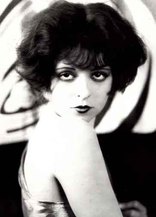
Caitlin Stryker
Clara Bow was known as the "It" girl for her famous performance in It however she found her way to Hollywood by way of a beauty contest while still in high school. After that famous role in 1927, Clara Bow was one of the top five Hollywood box-office attractions from 1927 to 1930 and was considered the embodiment of beauty, abandon, and sex appeal for the moviegoers of the Jazz Age. Some of her other hits include Rough House Rosie (1927), Ladies of the Mob (1928), Three Weekends (1928), Dangerous Curves (1929), and The Saturday Night Kid (1929).
(http://www.biography.com/articles/Clara-Bow-9221851)
Clara Bow was known as the "It" girl for her famous performance in It however she found her way to Hollywood by way of a beauty contest while still in high school. After that famous role in 1927, Clara Bow was one of the top five Hollywood box-office attractions from 1927 to 1930 and was considered the embodiment of beauty, abandon, and sex appeal for the moviegoers of the Jazz Age. Some of her other hits include Rough House Rosie (1927), Ladies of the Mob (1928), Three Weekends (1928), Dangerous Curves (1929), and The Saturday Night Kid (1929).
(http://www.biography.com/articles/Clara-Bow-9221851)
Louise Brooks
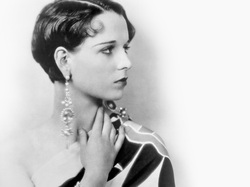
Caitlin Stryker
Louise Brooks first time on stage was when she was only four years old, playing the part of a bride in Tom Thumb's Wedding. She loved to dance and her mother soon enrolled her in dance classes and it was through her dance experience that she maaged to reach Hollywood. In 1925, Brooks signed a five year contract with one of the major film company, Paramount Studios, and appeared in her first film, The Streets of Forgotten Men. She quickly rose to leading roles in a dozen Hollywood movies. Some of her most famous movies were The Canary Murder Case, A Social Celebrity, Pandora's Box, & Diary of a Lost Girl.
(http://www.leatherockhotel.com/LouiseBrooks.htm)
Louise Brooks first time on stage was when she was only four years old, playing the part of a bride in Tom Thumb's Wedding. She loved to dance and her mother soon enrolled her in dance classes and it was through her dance experience that she maaged to reach Hollywood. In 1925, Brooks signed a five year contract with one of the major film company, Paramount Studios, and appeared in her first film, The Streets of Forgotten Men. She quickly rose to leading roles in a dozen Hollywood movies. Some of her most famous movies were The Canary Murder Case, A Social Celebrity, Pandora's Box, & Diary of a Lost Girl.
(http://www.leatherockhotel.com/LouiseBrooks.htm)
John Gilbert

Caitlin Stryker
John Gilbert was a major star of the silent era. He was a minor actor in several movies before moving to Fox in the 1920's and soon became the face of adventure and western action. Some of his most famous movies include the 1922 hit Monte Cristo, He Who Gets Slapped, The Merry Widow, and The Big Parade.
(http://www.starpulse.com/Actors/Gilbert,_John/Biography)
John Gilbert was a major star of the silent era. He was a minor actor in several movies before moving to Fox in the 1920's and soon became the face of adventure and western action. Some of his most famous movies include the 1922 hit Monte Cristo, He Who Gets Slapped, The Merry Widow, and The Big Parade.
(http://www.starpulse.com/Actors/Gilbert,_John/Biography)
The Academy Awards

Caitlin Stryker
The Academy Awards were first held on May 16th, 1929 in a private banquet hall at the Hollywood Roosevelt Hotel. Only two hundred and seventy people were attended the awards ceremony and guests were allowed to attend at a price of just five dollars. The Academy President of the time, Douglas Fairbanks, handed out all fifteen statuettes and hosted the ceremony. However the winners have already been announced three months before but after this ceremony, the Academy changed this policy and decided to keep the winners a secret. Emil Jannings was the first person to ever recieve an Oscar (his was for Best Actor).
(http://www.oscars.org/awards/academyawards/index.html)
The Academy Awards were first held on May 16th, 1929 in a private banquet hall at the Hollywood Roosevelt Hotel. Only two hundred and seventy people were attended the awards ceremony and guests were allowed to attend at a price of just five dollars. The Academy President of the time, Douglas Fairbanks, handed out all fifteen statuettes and hosted the ceremony. However the winners have already been announced three months before but after this ceremony, the Academy changed this policy and decided to keep the winners a secret. Emil Jannings was the first person to ever recieve an Oscar (his was for Best Actor).
(http://www.oscars.org/awards/academyawards/index.html)
Georgia O'keefe
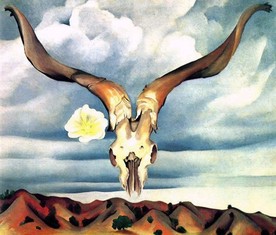
Bryanna Chrisp
Georgia O'keefe was an acclaimed artist throughout her 98 year life span. She gained fame in 1916 when she mailed some of her creations to a friend living in New York, whom gave the works to art exhibitionist Alfred Stieglitz whom, exhibited them. Stieglitz was enamored by the artistic genius embodied in O'keefe, and the two eventually married and lived as noted artists of the twentieth century. In the 1920's O'keefe's works became particularly well known. Her portrayals of "cityscape" as beautiful despite obvious unnattractive elements of city life were considered genius and she was also well known for her depiction of aboundingly beautiful plant life.
(http://www.pbs.org/wnet/americanmasters/episodes/georgia-okeeffe/about-the-painter/55/)
http://www.bing.com
http://www.museumsyndicate.com
(http://www.ehow.com)
Georgia O'keefe was an acclaimed artist throughout her 98 year life span. She gained fame in 1916 when she mailed some of her creations to a friend living in New York, whom gave the works to art exhibitionist Alfred Stieglitz whom, exhibited them. Stieglitz was enamored by the artistic genius embodied in O'keefe, and the two eventually married and lived as noted artists of the twentieth century. In the 1920's O'keefe's works became particularly well known. Her portrayals of "cityscape" as beautiful despite obvious unnattractive elements of city life were considered genius and she was also well known for her depiction of aboundingly beautiful plant life.
(http://www.pbs.org/wnet/americanmasters/episodes/georgia-okeeffe/about-the-painter/55/)
http://www.bing.com
http://www.museumsyndicate.com
(http://www.ehow.com)
Warner Brothers
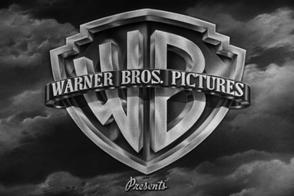
Kelsey Chittum
Warner Brothers studio was founded in 1923 by four brothers: Jack, Sam, Harry & Albert Warner. There first sucessful movie was Little House Around the Corner. By the end of 1924, Warner Bros.was arguably the most successful independent studio in Hollywood, but they gained the most success from the Jazz Singer. In 1928 Warner Bros. absorbed First National Pictures, after the large success of the Jazz Singer. By the end of the decade, Warner Brothers was one of the two most popular studios in the country and they still continue to prosper.
(http://www2.warnerbros.com/web/wbsf/index.jsp?section=geninfo&subsection=history#)
Warner Brothers studio was founded in 1923 by four brothers: Jack, Sam, Harry & Albert Warner. There first sucessful movie was Little House Around the Corner. By the end of 1924, Warner Bros.was arguably the most successful independent studio in Hollywood, but they gained the most success from the Jazz Singer. In 1928 Warner Bros. absorbed First National Pictures, after the large success of the Jazz Singer. By the end of the decade, Warner Brothers was one of the two most popular studios in the country and they still continue to prosper.
(http://www2.warnerbros.com/web/wbsf/index.jsp?section=geninfo&subsection=history#)
Steamboat Willie
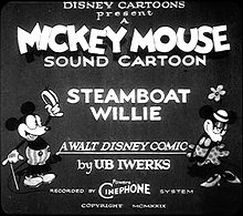
Kelsey Chittum
Steamboat Willie was first debuted and a theater in New York on November 18, 1928. Mickey Mouse, the star of the movie, had appeared in previous films, Plane Crazy and Gallopin' Gaucho. However, Steamboat Willie was different, it had sound. It was not the first cartoon to have sound, but Walt Disney was one of the first to use a click track, which was intended to keep musicians perfectly on track with the movie. Mickey Mouse, originally called Mortimer Mouse, was drawn by Ub Iwerks and Walt Disney recorded the voice for Mickey. Walt Disney had created a masterpiece, it did not take long for Mickey Mouse to become one of the most recognizable symbols throughout the world.
(http://smithsonianlibraries.si.edu/smithsonianlibraries/2009/11/mickey-mouse-in-sound-1928.html)
Steamboat Willie was first debuted and a theater in New York on November 18, 1928. Mickey Mouse, the star of the movie, had appeared in previous films, Plane Crazy and Gallopin' Gaucho. However, Steamboat Willie was different, it had sound. It was not the first cartoon to have sound, but Walt Disney was one of the first to use a click track, which was intended to keep musicians perfectly on track with the movie. Mickey Mouse, originally called Mortimer Mouse, was drawn by Ub Iwerks and Walt Disney recorded the voice for Mickey. Walt Disney had created a masterpiece, it did not take long for Mickey Mouse to become one of the most recognizable symbols throughout the world.
(http://smithsonianlibraries.si.edu/smithsonianlibraries/2009/11/mickey-mouse-in-sound-1928.html)
Winnie-the-pooh
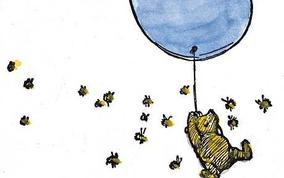
Kelsey Chittum
On October 14, 1926 the children’s book, Winnie-the-Pooh was first published. Alan Alexander Milne, the author based the story after his son, Christopher Alan, which is the name of the mane character. His son not only loved teddy bears, but also loved the bear Winniepeg, also called Winnie, that he often saw at the London Zoo. The names of many other characters were also based off of Christopher Alan’s stuffed animals. It did not take long for the book to become a big success, especially in the United States.
(http://history1900s.about.com/od/1920s/qt/winniethepooh.htm)
On October 14, 1926 the children’s book, Winnie-the-Pooh was first published. Alan Alexander Milne, the author based the story after his son, Christopher Alan, which is the name of the mane character. His son not only loved teddy bears, but also loved the bear Winniepeg, also called Winnie, that he often saw at the London Zoo. The names of many other characters were also based off of Christopher Alan’s stuffed animals. It did not take long for the book to become a big success, especially in the United States.
(http://history1900s.about.com/od/1920s/qt/winniethepooh.htm)
Popeye the Sailor
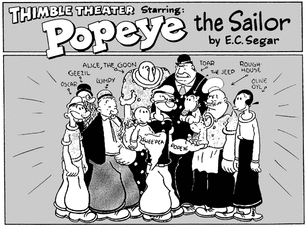
Kelsey Chittum
Popeye the Sailor Man was a cartoon strip by Elzie Crisler Segar, which first appeared in the newspaper strip Thimble Theater on January 17, 1929. It became one of the most well known cartoons on the strip within its first weeks after publication. People feel in love with Popeye because of Segar’s use of imagination and because his wild characters kept the story alive. As America entered the Great Depression, Popeye’s self confidence and eccentric personality showed Americans that even in rough times you can still be successful and have fun.
(http://www.calmapro.com/popeye/history.php?section=segar¤t=history)
Popeye the Sailor Man was a cartoon strip by Elzie Crisler Segar, which first appeared in the newspaper strip Thimble Theater on January 17, 1929. It became one of the most well known cartoons on the strip within its first weeks after publication. People feel in love with Popeye because of Segar’s use of imagination and because his wild characters kept the story alive. As America entered the Great Depression, Popeye’s self confidence and eccentric personality showed Americans that even in rough times you can still be successful and have fun.
(http://www.calmapro.com/popeye/history.php?section=segar¤t=history)
The Jazz Singer
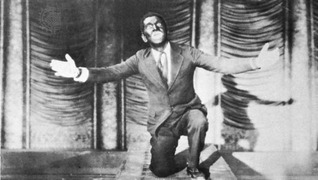
Paul Hwang
The Jazz Singer is a movie that was produced by Warner Brothers, and was directed Alan Crosland. The movie is about Jakie Rabinowitz who is a man that has a dream he wants to live, but the dream he wants to live isn't accepted by his father. The movie was significant because it was the first full-motion picture to show that it had synchronized dialogue included on the film. Jolson's first spoken line in the movie was "You ain't heard nothing yet," and indeed they had not. This movie made history.
(http://www.angelfire.com/co/pscst/jazzsinger.html)
The Jazz Singer is a movie that was produced by Warner Brothers, and was directed Alan Crosland. The movie is about Jakie Rabinowitz who is a man that has a dream he wants to live, but the dream he wants to live isn't accepted by his father. The movie was significant because it was the first full-motion picture to show that it had synchronized dialogue included on the film. Jolson's first spoken line in the movie was "You ain't heard nothing yet," and indeed they had not. This movie made history.
(http://www.angelfire.com/co/pscst/jazzsinger.html)
TIme magazine
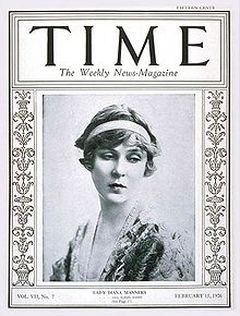
Paul Hwang
Time Magazine's first issue was published on March 3, 1923. The First publish cover Joseph G. "Uncle Joe"cannon on the cover. It was 32 pages long, and 6 pages of advertising. The magazine caught societies eyes all over the United States. The magazine would cover slow news week late. One of the major cover story on Time Magazine has to be Charles Lindbergh. The magazine had a picture of Charles finishing his trans-Atlantic flight on the front cover. December 27, 1926 was the last issue to have a white boarder cover.
(http://www.things-and-other-stuff.com/magazines/time-magazine.html)
Time Magazine's first issue was published on March 3, 1923. The First publish cover Joseph G. "Uncle Joe"cannon on the cover. It was 32 pages long, and 6 pages of advertising. The magazine caught societies eyes all over the United States. The magazine would cover slow news week late. One of the major cover story on Time Magazine has to be Charles Lindbergh. The magazine had a picture of Charles finishing his trans-Atlantic flight on the front cover. December 27, 1926 was the last issue to have a white boarder cover.
(http://www.things-and-other-stuff.com/magazines/time-magazine.html)
Rhapsody in Blue
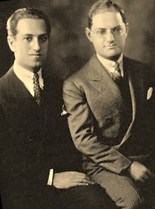
Paul Hwang
George Gershwin's "Rhapsody in Blue" premiered February 12, 1924 at Aolean Hall. This jazz-styled piano premiere was part of a concert entitled "An Experiment in Modern Music with Paul Whiteman and his Palais Royal Orchestra". For George, born December 6, 1896 in New York City, this premier was a career shaping event! The revolutionary work was a resounding success that brought Gershwin world acclaim and fame. The piece brilliantly incorporated trademarks of the jazz idiom into a symphonic form.
(http://www.vintageallies.com/1920s/qrhapsody-in-blueq.html)
George Gershwin's "Rhapsody in Blue" premiered February 12, 1924 at Aolean Hall. This jazz-styled piano premiere was part of a concert entitled "An Experiment in Modern Music with Paul Whiteman and his Palais Royal Orchestra". For George, born December 6, 1896 in New York City, this premier was a career shaping event! The revolutionary work was a resounding success that brought Gershwin world acclaim and fame. The piece brilliantly incorporated trademarks of the jazz idiom into a symphonic form.
(http://www.vintageallies.com/1920s/qrhapsody-in-blueq.html)
Manner Book
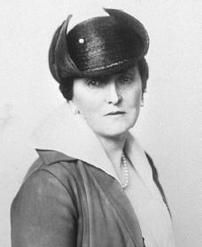
Paul Hwang
In the 1922's, the number one best seller book is Manner Book by Emily Post. It was said to be the best seller because it was not snobby to read. People across America would buy the book just to learn how to behave. The book had it's influence to American society. The book was the founder of etiquette in the United States.
(http://www.answers.com/topic/emily-post)
In the 1922's, the number one best seller book is Manner Book by Emily Post. It was said to be the best seller because it was not snobby to read. People across America would buy the book just to learn how to behave. The book had it's influence to American society. The book was the founder of etiquette in the United States.
(http://www.answers.com/topic/emily-post)
The Reader's Digest Published
-Zachary Brown-
First published in the 1922, The Reader's Digest (now Reader's Digest), was published and founded by DeWitt Wallace and his wife, Lila, when they couldn't get publishers to accept it. The first issue was released in February of 1922 and sold for 25 cents. In 1923, a 1-year subscription by mail was available for a special rate of $2.75. It quickly grew in popularity, appearing on American newsstands in 1929, becoming available in England in 1939, translated into 3 other languages (Spanish, Swedish, and Finnish) by 1945, and many more since then.
(http://www.ehow.com/about_5038102_history-readers-digest.html)
First published in the 1922, The Reader's Digest (now Reader's Digest), was published and founded by DeWitt Wallace and his wife, Lila, when they couldn't get publishers to accept it. The first issue was released in February of 1922 and sold for 25 cents. In 1923, a 1-year subscription by mail was available for a special rate of $2.75. It quickly grew in popularity, appearing on American newsstands in 1929, becoming available in England in 1939, translated into 3 other languages (Spanish, Swedish, and Finnish) by 1945, and many more since then.
(http://www.ehow.com/about_5038102_history-readers-digest.html)
Columbia Pictures
-Zachary Brown-
Started in 1919, in New York, Columbia Pictures, then named CBC (Cohn-Brandt-Cohn) Film Sales Company, a small company that distributed short subject films. By 1924, however, the CBC had developed into Columbia Pictures Corporation, a major motion picture studio, which housed itself at the corner of Sunset and Gower street in Los Angeles, California.
(http://www.columbiaranch.net/history.html)
Started in 1919, in New York, Columbia Pictures, then named CBC (Cohn-Brandt-Cohn) Film Sales Company, a small company that distributed short subject films. By 1924, however, the CBC had developed into Columbia Pictures Corporation, a major motion picture studio, which housed itself at the corner of Sunset and Gower street in Los Angeles, California.
(http://www.columbiaranch.net/history.html)
The Book of the Month Club
-Zachary Brown-
Founded in 1926, The Book of the Month Club, also known as the B.O.M.C., has distributed over 570 million books to it's members across the United States. The company's operating premise was that most book lovers do not read as many books as they intend to. By agreeing to purchase at least four books a year, club members could choose a hand-picked set of books that they would receive in the mail. This concept immediately became popular. By December 1926 the company had net sales of over half a million dollars. By 1928 the B.O.M.C.'s membership approached 100,000 people.
(http://www.answers.com/topic/book-of-the-month-club)
Founded in 1926, The Book of the Month Club, also known as the B.O.M.C., has distributed over 570 million books to it's members across the United States. The company's operating premise was that most book lovers do not read as many books as they intend to. By agreeing to purchase at least four books a year, club members could choose a hand-picked set of books that they would receive in the mail. This concept immediately became popular. By December 1926 the company had net sales of over half a million dollars. By 1928 the B.O.M.C.'s membership approached 100,000 people.
(http://www.answers.com/topic/book-of-the-month-club)
“The Three Musketeers”
-Zachary Brown-
Released in 1921, “The Three Musketeers”, was directed by Fred Niblo and stared actors like: Douglas Fairbanks, Leon Bary,George Siegmann, and Eugene Pallette. The 1921 production of Three Musketeers was primarily a comic action film, yet it also payed an extraordinary attention to detail, insuring that this period piece had a authentic ring. The film was a huge critical and box office success and remains, for many, the finest screen adaptation of Dumas' novel.
(http://www.answers.com/topic/the-three-musketeers-1921-film)
Released in 1921, “The Three Musketeers”, was directed by Fred Niblo and stared actors like: Douglas Fairbanks, Leon Bary,George Siegmann, and Eugene Pallette. The 1921 production of Three Musketeers was primarily a comic action film, yet it also payed an extraordinary attention to detail, insuring that this period piece had a authentic ring. The film was a huge critical and box office success and remains, for many, the finest screen adaptation of Dumas' novel.
(http://www.answers.com/topic/the-three-musketeers-1921-film)
Lillian Hardin
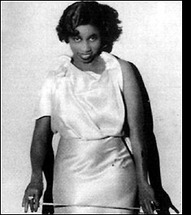
Andrew Ramirez
Hardin was born in 1898. She was an important jazz composer and piano player that also helped the most important Hot Bands from New Orleans. In 1921, she joined King Oliver's Creole Jazz Band and met Louis Armstrong. Armstrong and Hardin married in 1924. While they were married Hardin convinced her husband to leave the band and create his own and Hardin became a major contributor by composing the groups major songs. Lillian Hardin died in 1971 at a Louis Armstrong Memorial Concert in Chicago.
(http://www.redhotjazz.com/lil.html)
Hardin was born in 1898. She was an important jazz composer and piano player that also helped the most important Hot Bands from New Orleans. In 1921, she joined King Oliver's Creole Jazz Band and met Louis Armstrong. Armstrong and Hardin married in 1924. While they were married Hardin convinced her husband to leave the band and create his own and Hardin became a major contributor by composing the groups major songs. Lillian Hardin died in 1971 at a Louis Armstrong Memorial Concert in Chicago.
(http://www.redhotjazz.com/lil.html)
F. Scott Fitzgerald
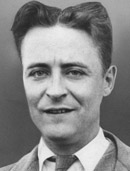
Andrew Ramirez
Fitzgerald was born on September 24, 1896 in St. Paul, Minn. Fitzgerald was best known as an author who depicted the jazz era during the 1920s. His most well known book was The Great Gatsby.
(http://www.biography.com/articles/F.-Scott-Fitzgerald)
Fitzgerald was born on September 24, 1896 in St. Paul, Minn. Fitzgerald was best known as an author who depicted the jazz era during the 1920s. His most well known book was The Great Gatsby.
(http://www.biography.com/articles/F.-Scott-Fitzgerald)
grant wood
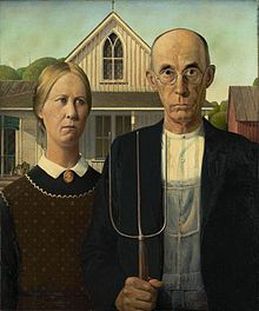
American Gothic
Andrew Ramirez
Grant Wood was an American Realist artist from Iowa. His trip to Germany in 1928 influenced him to drop his Impressionist ways and adopt realistic manners. Woods works in which stern people and stylized landscapes offer rigid, decorative images of the rural Midwest.
(http://www.answers.com/topic/grant-wood)
Grant Wood was an American Realist artist from Iowa. His trip to Germany in 1928 influenced him to drop his Impressionist ways and adopt realistic manners. Woods works in which stern people and stylized landscapes offer rigid, decorative images of the rural Midwest.
(http://www.answers.com/topic/grant-wood)
Al Jolson

Andrew Ramirez
Jolson was a Russian born U.S singer. He emigrated to the U.S at the age of five. He stared in the first ever full length talking movie The Jazz Singer. Al Jolson was also a black-face performer where he felt free to do whatever behind the makeup. Between 1911 and 1928, Jolson had nine sell-out Winter Garden shows in a row, more than 80 hit records, and 16 national and international tours.
(http://www.answers.com/topic/al-jolson#ixzz1ImtxeQQG)
Jolson was a Russian born U.S singer. He emigrated to the U.S at the age of five. He stared in the first ever full length talking movie The Jazz Singer. Al Jolson was also a black-face performer where he felt free to do whatever behind the makeup. Between 1911 and 1928, Jolson had nine sell-out Winter Garden shows in a row, more than 80 hit records, and 16 national and international tours.
(http://www.answers.com/topic/al-jolson#ixzz1ImtxeQQG)
